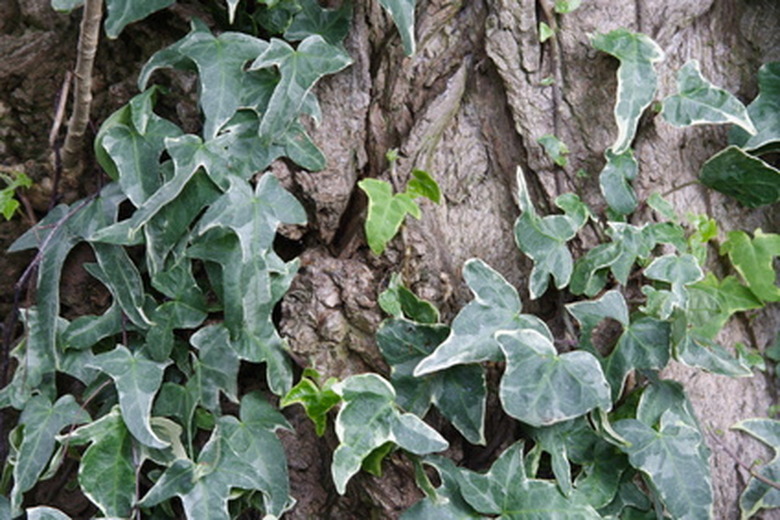Bugs On English Ivy
English ivy (Hedera helix) is a perennial vine notable for its lush, three-lobed leaves. A native of Europe, the plant is commonly grown as an outdoor climbing vine for garden structures, topiary and as an indoor ornamental. Like other garden plants, English ivy is susceptible to a host of harmful bug infestations.
Types
Black vine weevils, mites, mealy bugs, ivy aphids and scale are all known to feed on English ivy, according to Fine Gardening. Black vine weevils appear as either half-black, armored beetles or as soft, white larvae. The larvae of the black vine weevil penetrates into the soil and feeds on the roots of the plant. Mites and aphids, tiny and difficult to spot, often feed on new foliage. Mealybugs are oval bugs that have a cottonlike appearance when grouped together on the plant. Scale resembles a bumpy brown or white skin.
- English ivy (Hedera helix) is a perennial vine notable for its lush, three-lobed leaves.
- Mealybugs are oval bugs that have a cottonlike appearance when grouped together on the plant.
Symptoms
Symptoms of a pest infection range, depending on the bug. Wilted, yellowing leaves that drop prematurely may be the result of a black vine weevil attack. Black, powdery mold (often referred to as "black sooty mold") is often the result of aphids, which suck up moisture to the foliage and leave it fester. Indoor plants that have a series of tiny, yellow dots may be infested with mites. Mites may also leave thin white webs on the plant.
Other Causes
Some fungal or bacteria diseases may superficially resemble a bug infestation. Bacterial leaf spot causes a stippling of discolored dots on the plant's leaves, as does powdery mildew, according to the Connecticut Agricultural Experiment Station, or CAES. Check for insects or larvae first before treating a plant with insecticide. An ivy plant that's wilting or dropping leaves may be damaged from a harsh winter frost or you simply may not be watering the vine enough during summer droughts.
- Symptoms of a pest infection range, depending on the bug.
- An ivy plant that's wilting or dropping leaves may be damaged from a harsh winter frost or you simply may not be watering the vine enough during summer droughts.
Treatment
Insecticidal root drenches are an effective way to battle many outdoor ivy bugs. A commercial insecticide is mixed with water as per instructions and left to seep into the soil where ivy is growing. Always follow the instructions exactly and use the required dosage, CAES warns. House plants afflicted with mites or mealybugs can be taken outdoors and washed with a direct stream of water. You may wish to remove heavily infected leaves. Take extra care when applying insecticide to indoor plants and always do so in a well ventilated area.
Prevention
The best defense against bug infestations is to have a healthy plant. Plants that are sickly or stressed are more likely to attract bugs than healthy plants. Mites are less likely to attack house plants when the ivy is in a humid environment, CAES says. You can increase humidity by placing a tray of shallow water and rocks until the plant container. The rocks will hold the plant above the water while the water steams and rises to provide additional humidity to the ivy.
- Insecticidal root drenches are an effective way to battle many outdoor ivy bugs.
- A commercial insecticide is mixed with water as per instructions and left to seep into the soil where ivy is growing.
